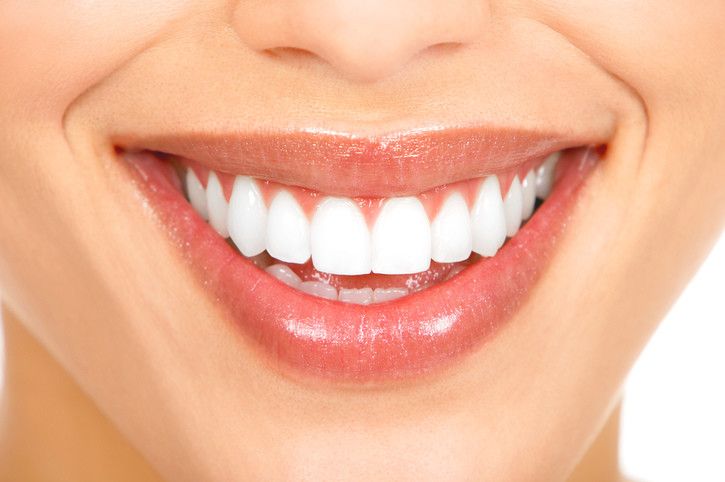TOOTH WHITENING

How shiny is your smile? Without any doubt, a bright and white smile is a human characteristic that adds charm, makes you younger and gives you self-confidence.
- What are the causes of tooth discoloration?
The cause of tooth discoloration can be endogenous or exogenous. Second class colorants can be easily removed through dental cleaning; on the contrary, first class colorants regard the internal structure and can be improved only through tooth whitening. Daily habits, such as coffee, tea, nicotine, the use of drugs, during the stage of tooth development (for example tetracycline), the chronic use of mouth antiseptic solutions and injuries have as result the deposition of colorants on the teeth.
- Which is the treatment of choice for the improvement of tooth discoloration?
The treatment of choice is tooth whitening, as it is a procedure which is safe, fast, effective and conservative, as it does not require the removal of dental tissue.
- How is tooth whitening performed?
There are three techniques of tooth whitening:
1) At the Dental Clinic (power bleaching) with the application of a high content bleaching agent (5%+-40% hydrogen peroxide), which, depending on the manufacturer’s instructions is activated (or not) with the aid of radiation.
2) At home, where it is performed by the patient with special whitening splints, following the dentist’s instructions.
3) A combination of tooth whitening at the dental clinic and at home (deep bleaching) which is more and more used, as its concept is to combine the positive elements of both the aforementioned techniques.
- Which technique is the best?
In a research of Kugel et al., 10 patients underwent treatment at the dental clinic and another group of 10 patients underwent combined treatment. The participants in the 2nd group, have statistically shown significantly whiter colorations in their teeth. Furthermore, studies mention that the combined whitening technique presents a longer life expectancy of the result. In our clinic we always seek a way to improve the services we provide so that we can meet your high requirements, thus we recommend the combined technique.
- What are the contraindications of tooth whitening?
- Pregnant women or nursing mothers.
- Children under 14 years old.
- Patients with extremely sensitive teeth.
- Patients with prosthetic restorations because the whitening material does not whiten the restoration materials.
- Patients with peroxide allergy.
- How old do I have to be to have my teeth whitened?
According to the European Directive no. 2011/84/ΕU tooth whitening is allowed to patients over 18 years old.
- Must I do something before tooth whitening?
In order for the treatment to be effective the whitening agent must be applied to clean dental tissues, without any microbial plaque or calculus, so that it can penetrate in the interior of the tooth. This is why the professional cleaning of the oral cavity before the procedure of tooth whitening may be deemed necessary.
- How is the procedure of tooth whitening performed?
Tooth imprints are initially taken, based on which the technician will construct the personalized whitening splints that will be used at home. At the second appointment the dental color measurement is performed with the aid of digital photography and subsequently we proceed to the isolation of soft tissues and gums. Then, the whitening agent is applied and activated with the use of an LED and we wait for 20 minutes, under the supervision of a dentist. We repeat the procedure for a second time. In the same session the whitening splints are checked and, if all complies with the safety rules, the material will be given to you, so that you can use it at home, along with detailed instructions for its use. The application at home requires 30 minutes for 7 – 10 days. After the end of 2 weeks from the completion of the treatment, a re-examination shall be performed.
- Is there a case that sensitivity occurs?
Sensitivity may occur in the first days but it is transient and disappears over time.
- What is the action mechanism of the whitening agent?
There is a multitude of whitening agent preparations in the market; the ones that are most commonly used in dental clinics contain 25-40% hydrogen peroxide, and at home 6% hydrogen peroxide or 10-20% carbamide peroxide. The latter dissolves to hydrogen peroxide and urea on contact with water.
The whitening procedure begins with the dissolution of hydrogen peroxide into free radicals, which oxidize the colorants of the dental tissue, breaking the large dark chains. These, in turn, will be transformed into linear chains, that have unsaturated double bonds, of which the color is whiter. Finally, they are oxidized again forming single bonds, which are whiter.
- How much whiter will my teeth become?
The result cannot be predicted, in some people the results are more spectacular than in other, for example, teeth that have a grayish coloration respond more difficultly.
- How long does the result of tooth whitening last?
The life expectancy of the result of tooth whitening depends on many factors, such as the high consumption of products with color additives and oral hygiene. Although there is a tendency that the teeth recover their initial color, the same tooth color is very rarely or never achieved. For the longest possible life expectancy of the treatment result, it is recommended to perform, every 6 months and for 6 days, an anamnestic application after a thorough removal of calculus and polishing of the teeth.
- Is tooth whitening dangerous?
In modern dentistry there is no danger in tooth whitening, as long as the protocol of its application is strictly observed and there are no exaggerations. On the contrary, there may some risks, when it is performed with the use of usual market products, as burns may be caused to the gums, as well as corrosion on the surface of the teeth.
- Can I make my front restorations whiter?
Tooth whitening can act only in natural teeth, thus the color of restorations, either of porcelain or resins does not change. That is why it may be possible that their replacement is required after the completion of the tooth whitening and after two weeks at least have gone by.
- One of my front teeth is darker. How can I deal with this?
This discoloration is due to the interior of the tooth and is treated with internal whitening. The causes are the injury of the tooth or a root canal treatment during which the removal of pulp tissue was incomplete and discoloration is caused by the decomposition of the products of blood within the pulp. The treatment consists in the internal whitening that is applied to endodontically treated teeth. The filling materials are removed from the tooth chamber and at a depth of 2-3mm from the base of the anatomical crown and we put at the top of the root canal a protective material. At the space that has been created is applied the whitening agent. The patient is re-examined in 2-3 days and, if it is required, the procedure shall be repeated until the same color with the adjacent teeth is achieved.
The Dental Association of Attica receives tens of complaints by people that are victims of misleading advertisements of dentists or other people, regarding dental procedures in areas that are not dental clinics. “Lately there has been advertising activity regarding whitening services in places other than medical clinics”, has been pointed out by the president of the Dental Association of Attica.
Constantinos Laghios, Dental Surgeon, Endodontist, M.S., Despoina Korai, Dental Surgeon




